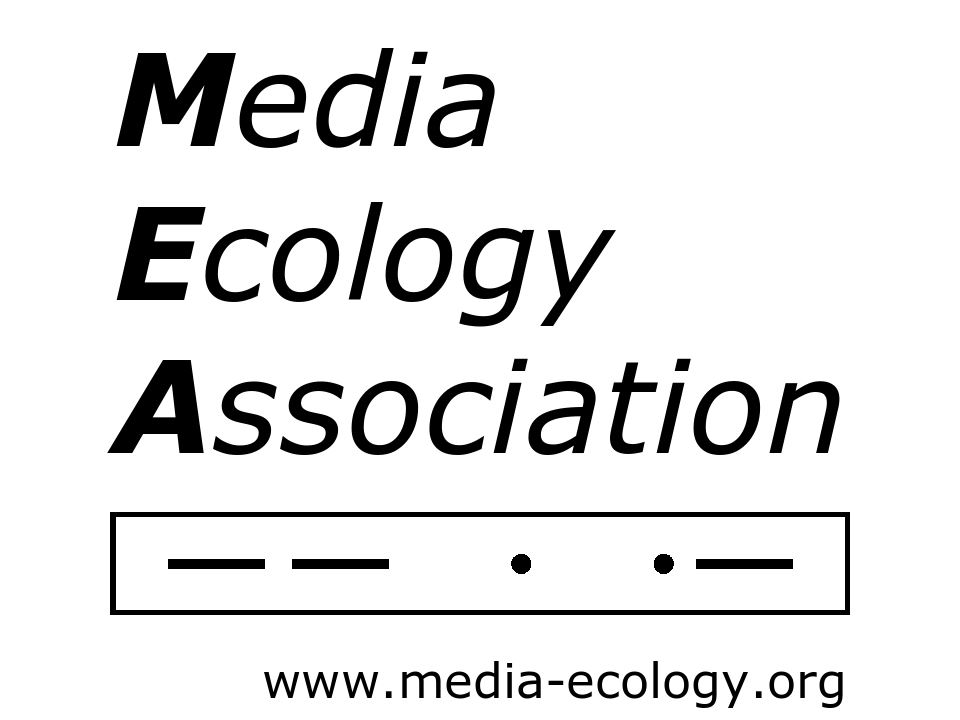What Is Media Ecology?
Three definitions
An Overview of Media Ecology (Lance Strate)
It is the study of media environments, the idea that technology and techniques, modes of information and codes of communication play a leading role in human affairs. Media ecology is the Toronto School, and the New York School. It is technological determinism, hard and soft, and technological evolution. It is media logic, medium theory, mediology. It is McLuhan Studies, orality–literacy studies, American cultural studies. It is grammar and rhetoric, semiotics and systems theory, the history and the philosophy of technology. It is the postindustrial and the postmodern, and the preliterate and prehistoric.
—Lance Strate, “Understanding MEA,” In Medias Res 1 (1), Fall 1999.
What Is Media Ecology? (Christine Nystrom)
It is, by now, almost a commonplace to remark that the 20th century is an era of change, of change unprecedented in its scope, its pace, and its potential for violent effects on the fabric of civilization.
- For Kenneth Boulding, the changes which have taken place since 1900 are of such enormous significance that he marks the 20th century as the turning point in what he calls “the second great transition in the history of mankind”—that is, the transition from “civilization” to “post-civilization.” According to Boulding, the impetus for that transition is provided by a radical shift in what he calls man’s “image” of reality.
- Thomas Kuhn refers to the same kind of radical shift as a revolution in paradigms; Pierre Teilhard de Chardin calls it a change in the noösphere; Ervin Laszlo, Ludwig von Bertalanffy, and others call it simply a shift in man’s world view.
- What each is referring to is an epochal change in the status, organization, and application of knowledge.
One of the consequences of the change to which Boulding and others refer, or, better perhaps, one of its hallmarks, is a movement away from the rigidly compartmentalized, uncoordinated specialization in scientific inquiry which characterized the Newtonian world, and a movement toward increasing integration of both the physical and the social sciences.
- One of the symptoms of this trend is the proliferation, in recent years, of “compound” disciplines such as mathematical biochemistry, psychobiology, linguistic anthropology, psycholinguistics, and so on.
- Another is the emergence of new fields of inquiry so broad in their scope that the word “discipline,” suggesting as it does some well-bounded area of specialization, scarcely applies to them at all. Rather, they are perspectives, moving perhaps in the direction of metadisciplines.
One such perspective, or emerging metadiscipline, is media ecology—broadly defined as the study of complex communication systems as environments.
As a perspective, metadiscipline, or even a field of inquiry, media ecology is very much in its infancy.
Media ecologists know, generally, what it is they are interested in—the interactions of communications media, technology, technique, and processes with human feeling, thought, value, and behavior—and they know, too, the kinds of questions about those interactions they are concerned to ask.
But media ecologists do not, as yet, have a coherent framework in which to organize their subject matter or their questions.
Media ecology is, in short, a preparadigmatic science.
—Christine Nystrom, Towards a Science of Media Ecology: The Formulation of Integrated Conceptual Paradigms for the Study of Human Communication Systems, Doctoral Dissertation, New York University (1973).
What Is Media Ecology? (Neil Postman)
Media ecology looks into the matter of how media of communication affect human perception, understanding, feeling, and value; and how our interaction with media facilitates or impedes our chances of survival.
The word ecology implies the study of environments: their structure, content, and impact on people.
An environment is, after all, a complex message system which imposes on human beings certain ways of thinking, feeling, and behaving.
- It structures what we can see and say and, therefore, do.
- It assigns roles to us and insists on our playing them.
- It specifies what we are permitted to do and what we are not. Sometimes, as in the case of a courtroom, or classroom, or business office, the specifications are explicit and formal.
In the case of media environments (e.g., books, radio, film, television, etc.), the specifications are more often implicit and informal, half concealed by our assumption that what we are dealing with is not an environment but merely a machine.
Media ecology tries to make these specifications explicit.
It tries to find out what roles media force us to play, how media structure what we are seeing, why media make us feel and act as we do.
Media ecology is the study of media as environments.
—Neil Postman, “The Reformed English Curriculum.” in A.C. Eurich, ed., High School 1980: The Shape of the Future in American Secondary Education (1970)
Want to learn more?
Check out Media Ecology 101: An Introductory Reading List, browse through our list of past award winners, sign up to grab virtual coffee with a media ecologist, or join us at one of our events.
